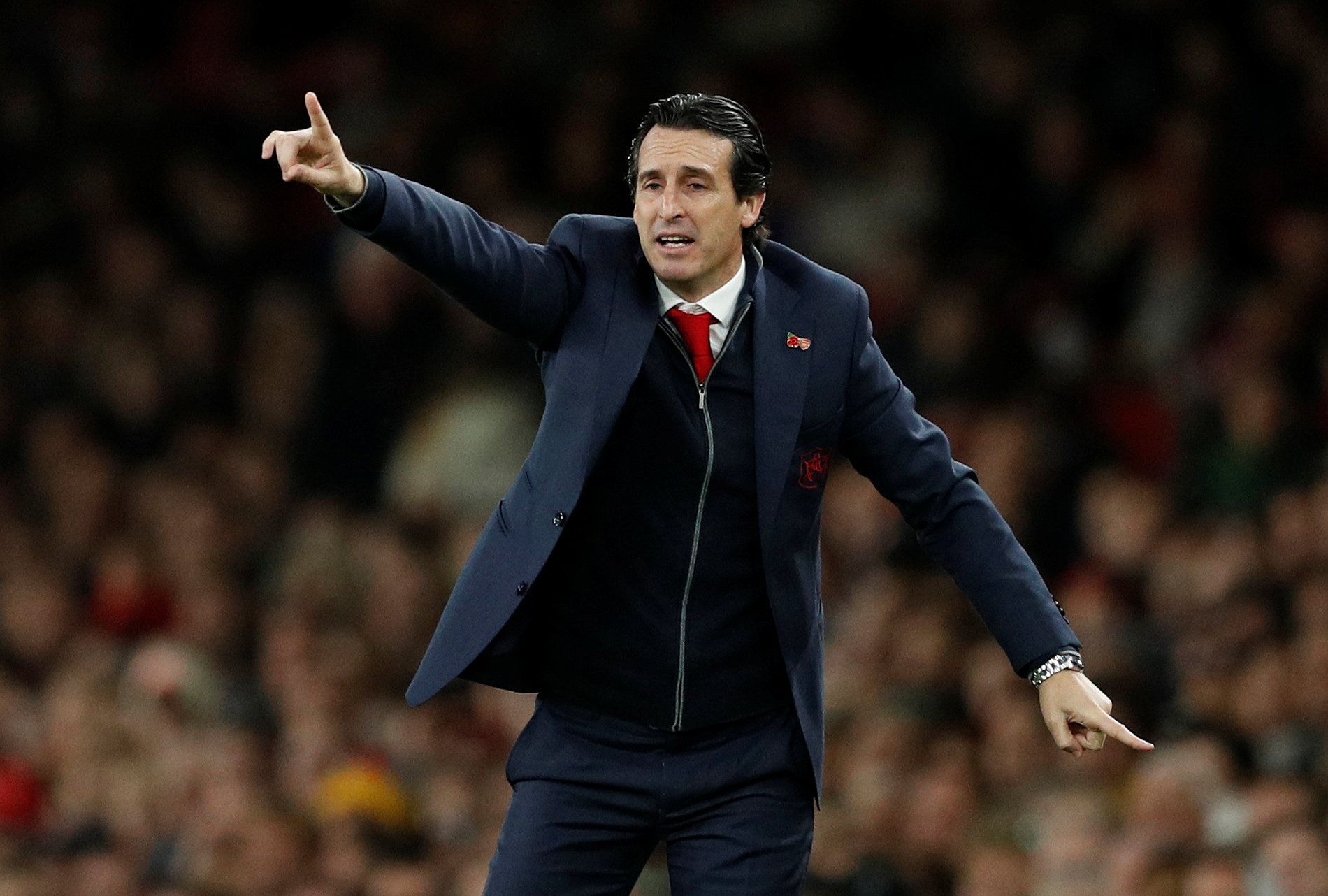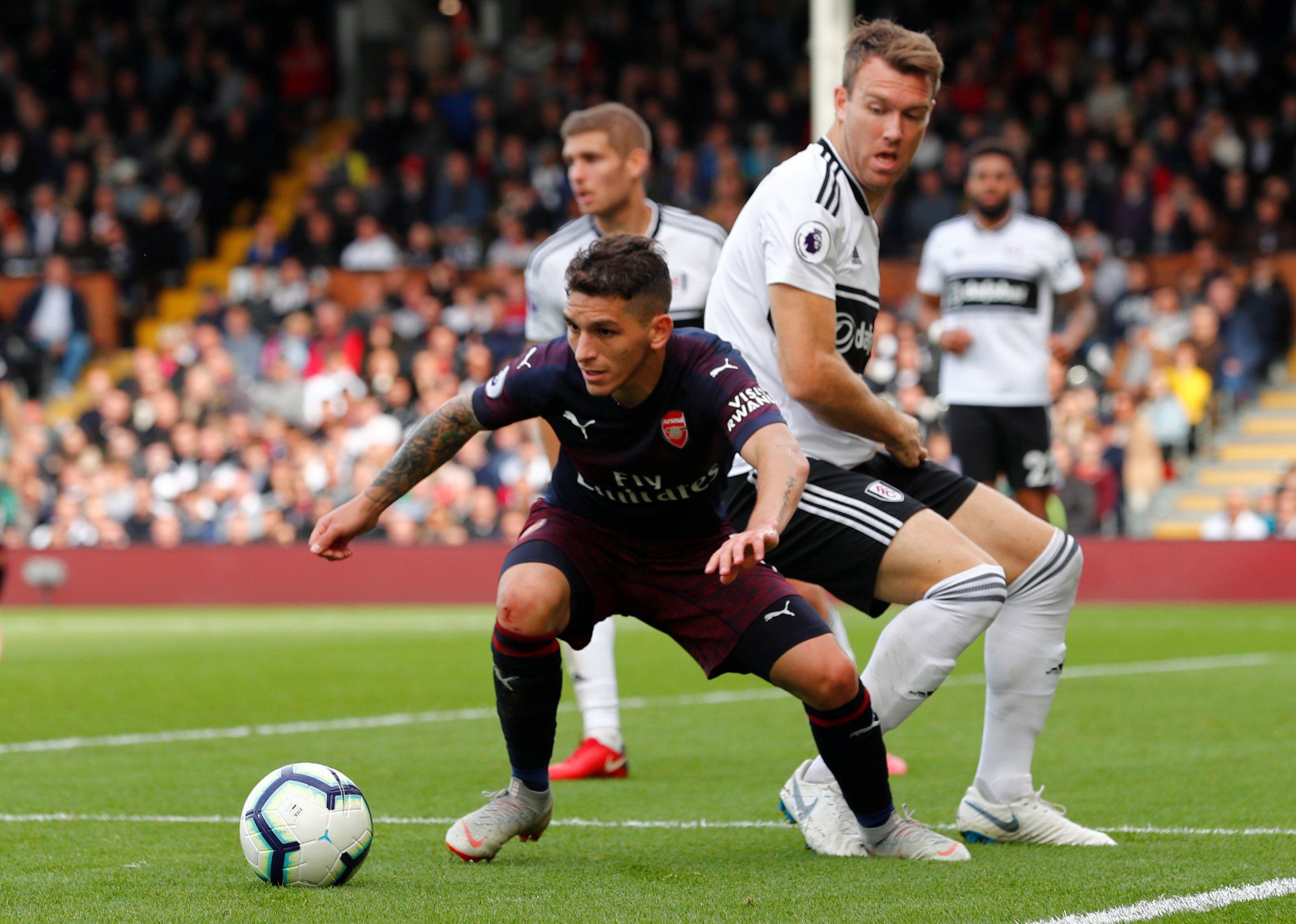[ad_pod ]
Each week, our friends over at Total Football Analysis Magazine tactically preview our Fixture in Focus. This week it is Arsenal vs Tottenham in the North London Derby, meaning that TFA Lead Analyst Lee Scott has taken a look at where Unai Emery has improved Arsenal tactically.
The North London Derby this weekend promises to be an interesting matchup between two sides whose form are currently trending in a positive direction.
This has not necessarily been the case over the last few seasons, with both sides struggling for form at different points. Indeed, this is the first time in the last three years that you could reasonably argue that Arsenal are coming into this match as favourites, and this is largely down to the positive changes made by new Spanish coach Unai Emery since he took over from the long-serving Arsene Wenger in the summer.
Under Wenger, Arsenal had developed a reputation for attacking football with a soft centre, in other words they remained dangerous in the attacking phase but they struggled to defend adequately against teams that were willing to attack them.
For the last few years under Wenger, fans were regularly calling for the club to sign a recognised defensive midfielder who would add steel to the defensive core. Ironically, in the summer that Wenger left, the club signed young Uruguayan midfielder Lucas Torreira from Sampdoria, a player who could fill that role perfectly.
Since taking charge we have seen Emery look to strike a balance between attacking intent and defensive purpose. The presence of Torreira at the heart of midfield alongside Swiss international Granit Xhaka in a double pivot has provided the base that Arsenal needed to attack with the knowledge that they were covered.
The composition of the midfield certainly warrants further inspection in this piece but so does the newfound tactical flexibility of the side, as illustrated by the decision to switch to a three at the back system for the recent league match against Bournemouth.
Midfield blocks
The first thing of note that we need to discuss when looking at Emery's Arsenal is the way he configures his midfield. There is no doubt that he has taken his time to find the balance and setup that he favours, with the likes of Aaron Ramsey and Matteo Guendouzi, in particular, being used at various points in the early stages of the season.
Now, though, we are seeing the partnership of Lucas Torreira and Granit Xhaka favoured on a regular basis and Arsenal are reaping the rewards from this consistent approach.
With Torreira capable of covering ground across the width of the pitch should the opposition suddenly win the ball and look to play in a direct fashion in transition and Xhaka emerging as a key passer in the Arsenal attack, there is a real sense of balance in the midfield.
What is especially interesting is that their positions are slightly interchangeable. Torreira is an all-action midfielder who is capable of driving forward with the ball at his feet or feeding passes into players that drop in between the lines. When Torreira does move forward Xhaka has the capacity to sit in a deeper position to cover and offer the base from which Arsenal can attack.
In possession, and with the full-back or wing-back moving into high areas in order to support the attacking phase, we see Lucas Torreira drop into a shielding role in front of the defensive line. With the mobility to cover across into the full-back area should the opposition win the ball back there is a dual benefit to Arsenal in a tactical sense.
First of all, there is less of a reliance on the central defenders to cover across into the wide areas. The majority of players with the more traditional central defensive profile are less comfortable when having to defend in isolation in the wide areas. This is especially true for Arsenal with the likes of Sokratis performing well in a more structured central role, but he lacks the pace to defend in isolation. Instead, the central defenders can retain their central position whilst trusting Torreira to move across to defend the wide areas while the full-backs or wing-backs regain their position.
Secondly, having Torreira on a deeper line to the rest of the midfield unit gives Arsenal the chance to reset their attacking play by switching the focus of the attack back through Torreira in a controlling position, where he will take possession with the attacking structure and the defensive structure of the opposition ahead of him.
In the defensive phase, having Torreira and Xhaka in a double pivot adds an extra layer of defensive security in front of the defensive line. They effectively form a defensive box along with the two central defenders that prevent the opposition from being able to find passing lanes or angles through which they can play in central areas.
This defensive base also allows the full-backs to move out to engage the opposition in wide areas as they look to build their attack down the outside to try to get around the Arsenal defensive block.
Tactical Flexibility
So far this season we have seen Emery favour the more standard 4-2-3-1 system with a single striker forming the focal point of attack. This structure has impressed since Emery moved to use Pierre-Emerick Aubameyang from the left-hand side while Alexandre Lacazette takes the lone striker role.
With Aubameyang having a player profile that sees him naturally drift into central areas when moving into the final third, this presents interesting options for Arsenal to develop overloads across the final third, especially with the threat of Mesut Ozil playing in the traditional '10' position.
With Henrik Mkhitaryan staying relatively wide on the right-hand side in this structure, there are different roles given to the full-backs; the left-back moving up into high areas of the field and the right-back moving slightly infield into an inverted position. This gives the overall structure an asymmetrical look but also offers balance across the field.
The movement patterns from Aubameyang when he attacks on a diagonal line from the left-hand side make it very difficult for the opposition to defend effectively. He arrives in the final third on the same line as the forward at pace and from an angle, often creating immediate overloads and breaking through the defensive line.
There is also a chance that Emery will opt to start this match with his three at the back system to negate the dual threat of Spurs forwards Harry Kane and Son Heung-Min. If this is the case then the focus in the attacking phase from Arsenal will be entirely less predictable.
Against Bournemouth, the narrative surrounding Arsenal was the decision by Emery to drop Ozil from the midfield. Instead, we saw Aubameyang lead the line with Mkhitaryan and Alex Iwobi playing in more narrow positions behind the striker.
Throughout the match, the Bournemouth defence found it difficult to cope with the positioning and movement from the two attacking midfielders as they drifted constantly in and out of the half spaces in the final third. With both wing-backs able to move into high positions to provide the width there is an impressive balance to Arsenal's the attacking movement.
Conclusion
The build-up to this match and the opening stages will be intriguing as we wait to see what the tactical approach from Unai Emery will be. Will he start with the three at the back system and sacrifice the potential creativity of Ozil or will he choose the 4-2-3-1 with Aubameyang on the left?
Either way, it is refreshing to see the new look Arsenal with the tactical flexibility to start to compete with the best teams in the league.
If you love tactical analysis, then you’ll love the new magazine from totalfootballanalysis.com – 118 pages of pure tactical analysis covering topics from the Premier League, Serie A, La Liga, Bundesliga and many, many more. Get your copy today for just £4.99 here!






